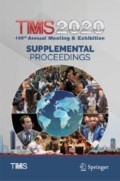Abstract
Most biological systems fully take advantage of their soft tissues by quickly reacting and interacting with the environment. This exceptional performance is possible due to flexible muscles that can bend and contract in multiple degrees-of-freedom. Since traditional robots with rigid components cannot mimic these movements, soft robotic systems fabricated from flexible elastomers are starting to receive much attention. Similarly, developing actuation techniques that can control the movement of these soft materials in multiple degrees-of-freedom is also crucial. This study proposes a new soft actuation mechanism through the use of ultrasonic atomization and small piezoelectric transducers. Unlike conventional pneumatic-based systems, this soft structure is completely untethered, which can be actuated by simply placing it above an ultrasonic transducer. First, a hollow structure was fabricated by pouring uncured elastomer into a 3D-printed mold. Second, the structure was partially filled with a small amount of liquid and placed above a piezoelectric disc. Then, exciting the transducer generated ultrasonic waves that propagated through the wall of the structure. When the amplitude of the ultrasonic wave was high enough, the liquid inside the structure was atomized and ejected small droplets inside the closed, soft chamber. These droplets rapidly evaporated and deformed the soft structure. In this work, the experimental results were compared with finite element modeling to characterize the ultrasonic-atomization-induced soft structure actuation.
Access this chapter
Tax calculation will be finalised at checkout
Purchases are for personal use only
References
Cooper KM, Hanlon RT, Budelmann BU (1990) Physiological color-change in squid iridophores. Ultrastructural mechanisms in lolliguncula-brevis. Cell Tissue Res 259(1):15–24
Shadwick RE, Gosline JM (1985) Mechanical-properties of the octopus aorta. J Exp Biol 114:259–284
Allen JJ, Bell GRR, Kuzirian AM et al (2014) Comparative morphology of changeable skin papillae in octopus and cuttlefish. J Morphol 275(4):371–390
Margheri L, Laschi C, Mazzolai B (2012) Soft robotic arm inspired by the octopus: I. From biological functions to artificial requirements. Bioinspir Biomim 7(2):025004
Kier WM, Stella MP (2007) The arrangement and function of octopus arm musculature and connective tissue. J Morphol 268(10):831–843
Sfakiotakis M, Kazakidi A, Tsakiris DP (2015) Octopus-inspired multi-arm robotic swimming. Bioinspir Biomim 10(3):035005
Laschi C, Cianchetti M, Mazzolai B et al (2012) Soft robot arm inspired by the octopus. Adv Robot 26(7):709–727
Furukawa S, Wakimoto S, Kanda T et al (2019) A soft master-slave robot mimicking octopus arm structure using thin artificial muscles and wire encoders. Actuators 8(2):40
Tolley MT, Shepherd RF, Mosadegh B et al (2014) A resilient, untethered soft robot. Soft Robot 1(3):213–223
Lee H-J, Loh KJ (2019) Soft material actuation by atomization. Smart Mater Struct 28(2):025030
Acknowledgements
This work was supported by the US National Science Foundation under grant no. CMMI-1762530. The authors acknowledge Prof. H. Alicia Kim and her research group for their collaboration. Additional support was provided by the Jacobs School of Engineering, University of California-San Diego.
Author information
Authors and Affiliations
Corresponding author
Editor information
Editors and Affiliations
Rights and permissions
Copyright information
© 2020 The Minerals, Metals & Materials Society
About this paper
Cite this paper
Lee, HJ., Loh, K.J. (2020). Characterization of Soft Actuation Through Ultrasonic Atomization. In: TMS 2020 149th Annual Meeting & Exhibition Supplemental Proceedings. The Minerals, Metals & Materials Series. Springer, Cham. https://doi.org/10.1007/978-3-030-36296-6_82
Download citation
DOI: https://doi.org/10.1007/978-3-030-36296-6_82
Published:
Publisher Name: Springer, Cham
Print ISBN: 978-3-030-36295-9
Online ISBN: 978-3-030-36296-6
eBook Packages: Chemistry and Materials ScienceChemistry and Material Science (R0)

